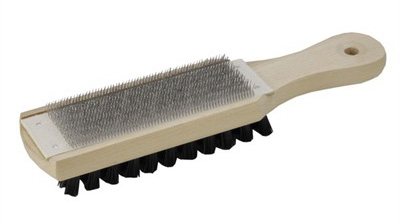Anyone who plans on doing more than basic cleaning and
maintenance of their firearms will eventually need to smooth or polish a
contact point. Whether to slick up a trigger, polish a bolt, or clean up a
scratch, metal will need to be removed, and the two main tools used for this
purpose are stones and files.
The primary difference between files and stones is that files are
generally used to remove metal in greater or lesser amounts, while stones are
more commonly used to smooth metal while removing as little as possible. In
this article I’m going to focus on files. I’ll cover stones another time.
There are a mystifying
array of files available. Hard metal files for steel, soft metal files for
aluminum and brass, wood files (often called rasps), and files for more specific
materials such as plastic or bone.
Files are also rated by their cut. There are single cut and
double cut files, and single cut files have one set of angled grooves (called
teeth) down their length, while double cut files have two sets that cross at opposing
angles. Double cut files can be used with heavier pressure and will generally
remove more metal. However, they can also leave a smoother finish.
To protect our hands, it’s always recommended that a file
handle be used. These can be wood, plastic, or rubber, and can be
permanently attached or removable. The important thing is that the sharp tail
of the file, called the tang, is prevented from being driven into our hand if
we slip. A good handle can also give more control when filing.
 |
Image property of www.disher.com |
Before starting a work process that involves files, apply file chalk to the cutting surface. This aids in two main ways: it acts as a dry lubricant when filing, and it makes cleaning the pins (what metal filing residue is commonly called) out of the file teeth. Cleaning files during and after use involves a file brush.
Cleaning of the file should be done as the teeth become
loaded during filing, as pins caught in the teeth can scratch the surface of the workpiece.
Once filing is complete, the files should be thoroughly brushed before being
stored.
Never put files where they can bump each other, as this can
damage the teeth and shorten the useful life of the tool. Instead, store them
in separate containers such as plastic
tubes. These can be purchased in different sizes and cut to fit the file
length. Caps are also available.
There’s more to proper use, care, and feeding of files, of course, but this should get you started.





No comments:
Post a Comment